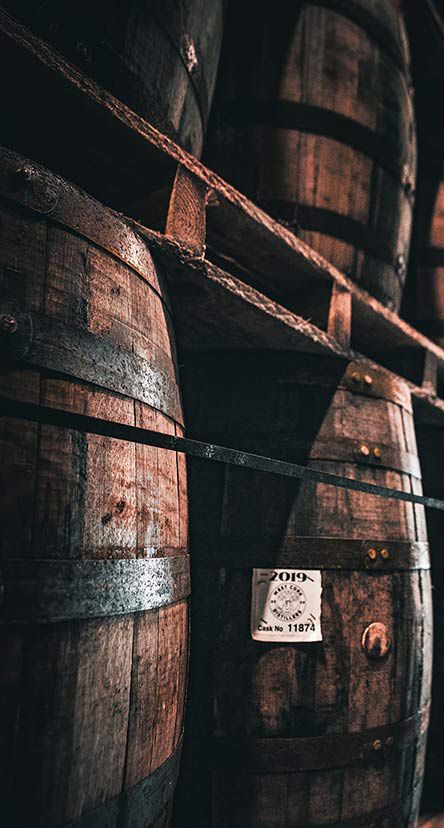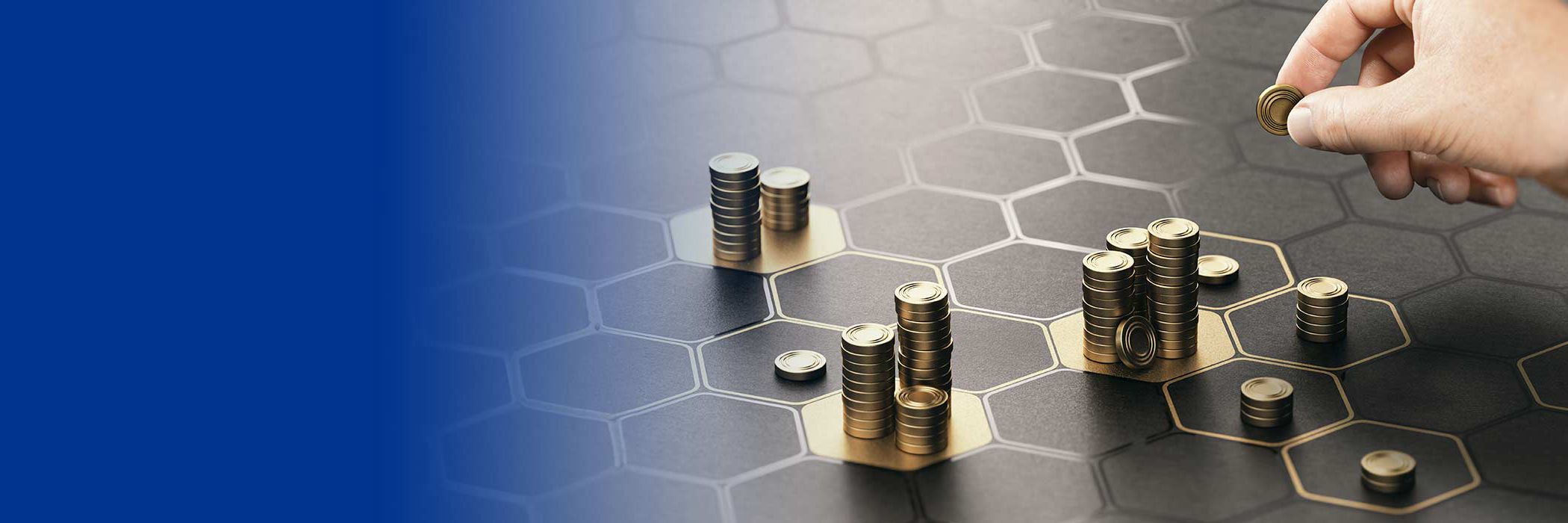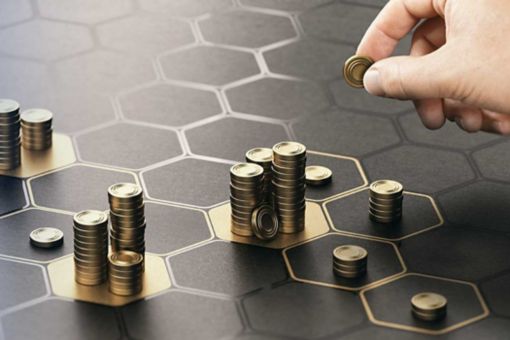Whiskey market landscape series
Assessing a whiskey’s true value is often complex. In comparison with more traditional asset classes, most of which come with large scale historical data-sets to help inform investor decisions, whiskey can seem less transparent. Chris Brown and our Strategy team explain below.
Recent years have witnessed soaring values for many fine whiskeys in both cask and bottle, but headline sales mask layers of nuance. Rarity, scarcity, age, branding, awards, and other factors all contribute to whiskey value, alongside the less predictable factors such as changing consumer taste and sentiment. Added to these challenges are those posed by fraud and overvaluation, both of which have frequently made headlines in the space, and investors interested in this market should expect to exercise the same due diligence as in any other. In part three of our thought leadership series aimed at highlighting this investment class for a wider audience, we take a deeper look at the many components of whiskey valuation.
What’s in a brand?
As with any consumer product, branding plays a huge part in determining the ultimate price of a cask or bottle of whiskey. It is the reason why two bottles of whiskey made in much the same way, often only a few miles from each other, and at the same time, can go on to command such vastly different prices.
Distilleries with well-established brands often command premium prices for their spirits and enjoy sustained demand in the secondary market. Key factors in building a brand include the people behind the whiskey (i.e. the master blenders and distillers), prestigious awards, visibility in the marketplace and relative scarcity and exclusivity.
Ultimately, the brand's reputation, achievements, and craftsmanship are what make it highly sought after. Newer players entering the market to capitalise on today’s booming demand can build a brand leveraging some of this toolkit, with limited age and heritage not necessarily barriers to success.
Building iconic whiskey brands
The distillery tool
A handful of the world’s finest whiskey distilleries, including names like Macallan and Glenfiddich, have achieved market-defining status. Such brands have relied on a handful of powerful tools, including:
- Craftsmanship
Brand champions tend to have a compelling story to tell about their unique production processes, multigenerational learning, and quality ingredients that enable them to produce high-calibre whiskey. - Storytelling
Origin stories have their part to play in distilleries’ efforts to craft a uniquely fascinating narrative about themselves for consumers to enjoy. - Sponsorship
As with any major consumer good, whiskey producers choose their commercial relationships carefully to reinforce the brand values they seek to embody. - Landscape
Distilleries are often located in the midst of dramatic landscapes, which are a huge asset not only when it comes to visual materials but also as an attraction for consumer engagement in the form of tours, tastings, and tutorials at the distilleries themselves. - Design
Design and presentation of whiskey bottles play a critical role in conveying the brand’s luxury and exclusivity, helping to justify premium pricing and building emotional appeal to consumers. - Market presence
Mass market brands can reach a level of ubiquity to allow them to become well recognised global players. This in turn enables significant marketing spend to help further enhance the brand. - Market position and pricing
Relative scarcity and associated higher pricing can help certain brands to position themselves as ultra-exclusive, premium products.

Branding case studies
Hibiki, founded in 1989, was created to commemorate the 90th anniversary of Japan’s Suntory whisky company, and was intended to celebrate the art of Japanese whisky blending. Today, Hibiki is one of the most iconic and revered whiskies in the world, a byword for exceptional quality and craftsmanship. Its brand has been built on the following foundations:
- Harmony: the word hibiki means ‘harmony’ in Japanese, perfectly reflecting the philosophy of the brand, which is a celebration of Japanese blending. ‘Hibiki’ is an expression of intent: to craft blends meticulously to produce complex and harmonised flavour profiles from whiskies of different ages and types.
- Craft and precision: Hibiki whiskies are created by Suntory‘s master blenders to exacting quality standards, in a process that demands significant time, expertise, and craftsmanship, contributing to the brand’s reputation for premium quality.
- Japanese culture: Hibiki‘s packaging, labelling, and bottling has been carefully selected to evoke Japanese craftsmanship and aesthetics, creating a sense of elegance and refinement that resonate with the whisky’s intended audience.
- Awards: Hibiki whiskies have garnered multiple prestigious awards over the years, winning them critical praise and word of mouth endorsements that have done much to cement the brand’s reputation for excellence.
Today, Hibiki enjoys a hallowed status amongst whiskey enthusiasts around the world, for whom it is a brand synonymous with an exceptional taste experience.
Craft is a relative newcomer to the whiskey scene. Its aim is to reinvent Irish whiskey; elevating its potential and reinvigorating the art of whiskey-making. Craft has risen to prominence in only a few years with its success built on their dedication to a few key branding themes, namely:
- Innovation: Craft has sought to differentiate itself by experimenting with cask types, using innovative techniques to create unique flavours and distinctive finishes across their range of single malts.
- Quality: Craft has emphasised quality ingredients and craftsmanship throughout its production process in an effort to cultivate an ultra premium product range.
- Awards: In the three years since launching, Craft has won a range of prestigious awards (including in categories beyond those traditionally associated with whiskey brands) for its taste, design and broader business achievements and innovation. This mix of awards and success rate (Craft has medalled in 97% of the awards categories it has entered to date with 60% of those at gold level or above) has garnered press attention and collector interest which in turn has contributed significantly to the brand's recognition within the industry. For example, these include awards related to:
- Taste and quality: Master and Gold Medals at the Drinks Business & Spirits Business Autumn Tasting 2023, and the Spirits Business Luxury Masters 2023, Best Irish Single Malt at the World Whiskies Awards, Double Gold at the San Francisco World Spirits Competition, etc.
- Design: Two platinum medals at the A’ Design Awards, an acclaimed iF Design Award and two Red Dot awards for their glassware.
- Business achievement: Innovation, disruption and entrepreneurship awards at the 2022 Best Business Awards.
- Design: Craft sees the added value of design in building their brand. Acclaimed luxury and packaging designer Tiago Russo (who ranks in the top 5 of global designers as per 2024 Design Leaderboards) is one of the founding members of the company and plays a key role in elevating the product, the brand, and ultimately the overall experience through design."
The components of value
Branding and distillery pedigree are only part of the picture when it comes to whiskey value. A multiplicity of other factors can add to – or subtract from – the value of the brand itself. Of course, the quality of the whiskey itself is critical; there is a wide quality spectrum, with mass-produced blends at one end and master-distiller-crafted single malts at the other.
Quality can be further determined by age; the longer a whiskey is allowed to mature in cask, the more developed and complex its flavour profile is likely to become, as it interacts with the cask over time. This effect will of course vary by cask type; casks made from different wood varieties, or which have previously been used to store other liquors such as sherry or port, will impart different flavours to the whiskey, contributing differently to its maturation. Mature, complex, distinctive flavour profiles are highly prized, and tend to command higher values.
Advanced age can also be a corollary for rarity. However, this is also a function of the original production volume and other factors that may limit a whiskey’s production, such as the discontinuation of its original distillery. It can be noted that age and legacy isn’t everything and value is enhanced through utilising modern techniques, that compliment traditional whiskey-making.
It is also worth considering that whilst rarity and scarcity strongly influence value, the two factors are distinct. Scarcity of a whiskey is a function not of its overall remaining volume but of its availability in the market at a given time, which in turn is a function of production constraints, consumer demand, and distribution channels. Both rarity and scarcity are associated with smaller batches and limited editions, those matured in rare cask finishes such as casks previously used for sherry or rum, or those produced by distilleries that have since stopped producing.
Finally, just as in other markets, whiskeys that win major awards can often command a significant premium, since such awards confirm the approval of industry judges and tastemakers and signal good quality and taste. For example, significant price increases have been observed from award winning options:
Awards, prestige and value
| Brand | Release date | Amount released | Award won | Momentous occasion | Release price | Current price | Annualised ROI % |
|---|---|---|---|---|---|---|---|
| Yamasaki 2013 sherry | 2013 | Not public | World Whisky of the Year in the 2015 edition of Jim Murray's Whisky Bible | First all sherry cask | GBP 200 | GBP 7,500 on wine searcher | 39% |
| Craft Irish Whiskey - The Devil's Keep | Nov 2020 | 333 bottles | World Whiskies Award - Best Irish Single Malt 2022 | Inaugural release | GBP 7,600 | GBP 20,200 on Wine- Searcher | 38.5% |
| Macallan Queen’s Diamond Jubilee 2012 | Middle of 2012 | 2012 bottles | No Award | Queen’s Diamond Jubilee | GBP 350 | GBP 11,200 on wine searcher | 33.5% |
Note: USD to GBP currency conversion: 1 USD = GBP 0.76
The cleanest dram
Inevitably, with today’s focus on decarbonisation and sustainability, recent years have seen many distilleries move to incorporate environmental stewardship into their operations. This includes undertaking to use renewable energy, reduce organic waste, adopt more sustainable packaging, and support local wildlife conservation efforts.
On Islay, both Bruichladdich and Ardbeg have made sustainability a more prominent role in their branding. Bruichladdich is aiming to decarbonise its distillation by 2025 via both renewable energy and hot wastewater recycling, and Ardbeg is reserving £1m of its recent £16m cask sale for community and environmental projects on the island.
Elsewhere in Scotland, Macallan has committed to achieve net zero emissions by 2045, with a 50% reduction by 2030, through a combination of biomass, renewable energy, and efficiencies.
Furthermore, relative newcomer Nc’Nean, founded in 2017, has built its brand heavily around its commitment to sustainable production, achieving C corp certification in 2022. Nc’Nean boasts a range of best practices including using only renewable energy, organic Scottish barley and 100% recycled glass bottles, as well as becoming the first whisky distillery in the UK to be verified as net zero carbon emissions for scopes 1 and 2.

Conclusion: get to know your market
It is no secret that many alternative assets have gained popularity in recent years, and with market volatility becoming the norm rather than the exception, interest in the asset class continues to grow.
As with art, antiques, or luxury items such as handbags and watches, it is crucial for whiskey investors to understand the potential value of their investment, as well as the variables that are likely to affect its value trajectory: brand, age, rarity, scarcity, and prestige.
For many, learning in greater depth about these factors and building up their knowledge of the sector, whether through research or direct contact in the form of whiskey tourism, can add a layer of pleasure and self-development to their investing that is absent from more traditional asset classes.
Looking ahead - Part 4
In the next addition of our series, we will explore whiskey in the context of the broader alternatives and luxury investment markets. Stay tuned for insights on investor attitudes to market regulation and key existing information gaps of concern.




